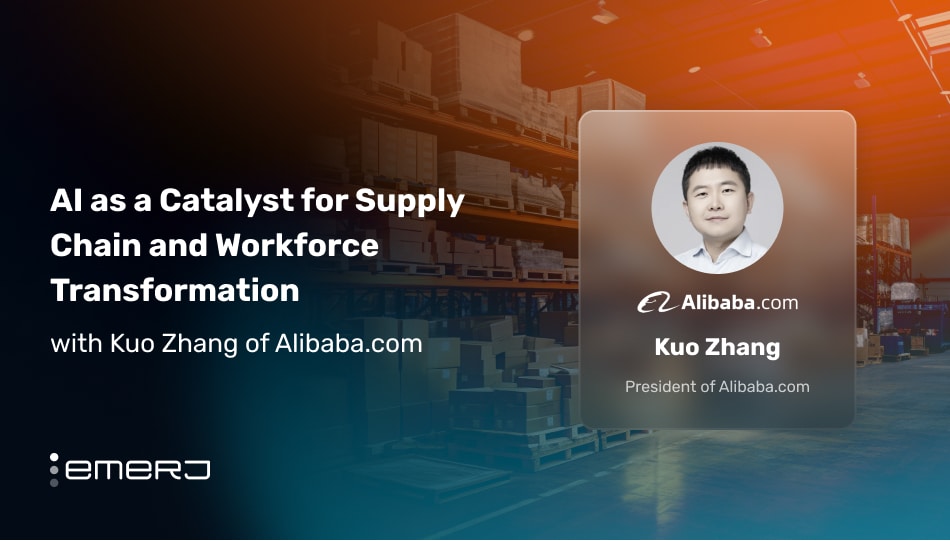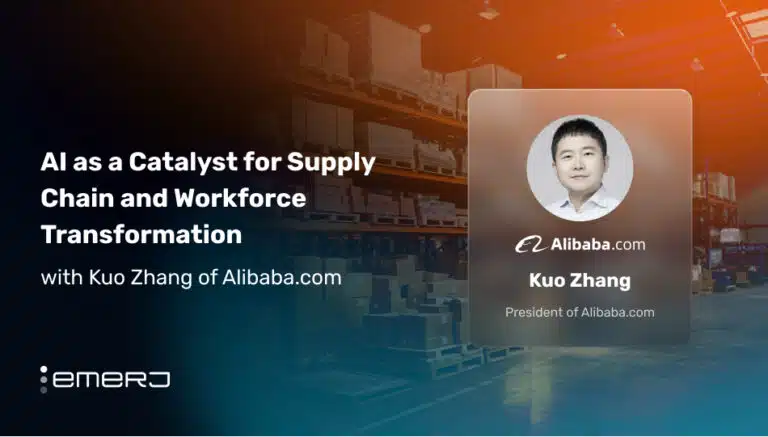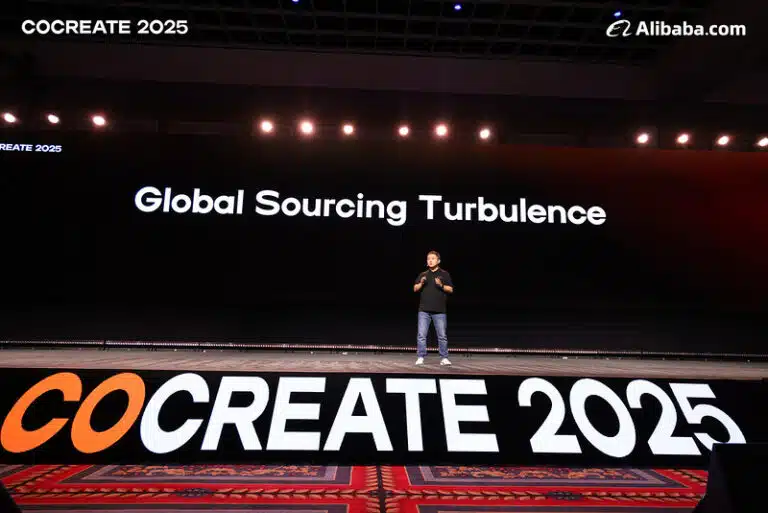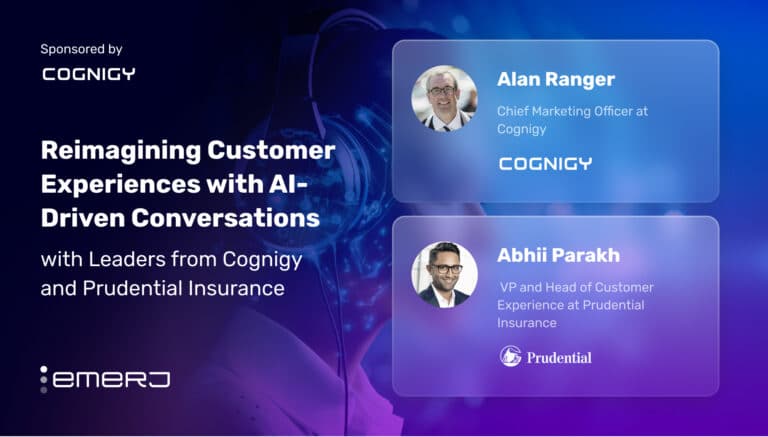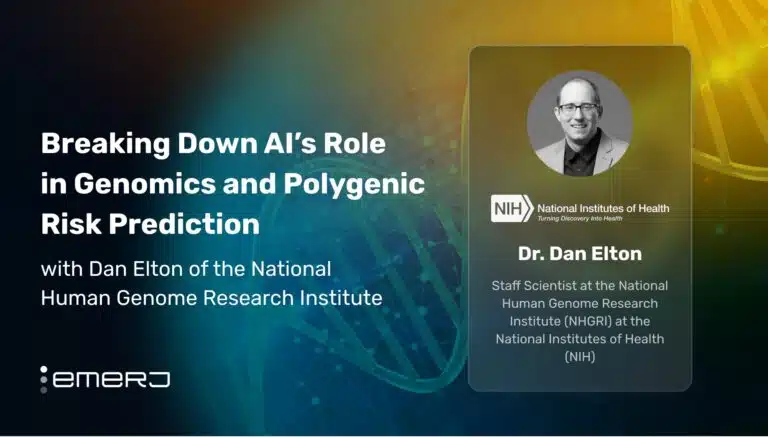Small businesses and enterprises alike are running into similar roadblocks when it comes to deploying AI at scale and developing resilience in today’s global supply chains. While many leaders understand the urgency, their organizations often face structural, cultural, and logistical barriers to implementation.
According to the U.S. Census Bureau’s Small Business Pulse Survey, 38.8% of all U.S. small businesses reported domestic supplier delays in a given recent week, and 64.6% of small manufacturers did so. Among manufacturing small enterprises, 39% said they expected to need new supply chain options within six months.
Meanwhile, an OECD survey found that only 18% of SMEs are aware of government support schemes for adopting digital tools, pointing to a striking gap in readiness. In the U.S., the Department of Commerce found that while only 3% of businesses reported using AI, over 40% admitted they faced no barriers — yet still had not adopted it.
These pressures of disruption, under-utilized technology, and labor constraints are precisely what Alibaba.com President Kuo Zhang addressed in an interview following his keynote speech at CoCreate 2025 in Las Vegas.
In an exclusive conversation with Emerj Editorial Director Matthew DeMello, Zhang describes how enterprises and SMBs alike will be leveraging the same AI tools — agentic AI, supplier data platforms, and more — to seize new strategic advantages, unlock new markets, and respond to persistent volatility in the global supply chain.
This article breaks down actionable takeaways from their conversation for retail and logistics leaders in two critical areas of AI adoption:
- Embedding AI KPIs into employee roles accelerates adoption: Assigning measurable AI goals across departments ensures adoption is not siloed and doubles the rate of innovation and idea execution.
- Leveraging supplier diversification as a resilience tool: Utilizing AI-driven sourcing platforms to expand and pivot supplier networks enables enterprises to withstand disruptions, such as tariffs and pandemics, while remaining competitive.
Guest: Kuo Zhang, President of Alibaba.com
Expertise: Global Trade, Artificial Intelligence, Digital Supply Chains
Brief Recognition: Kuo has served as President of Alibaba.com since 2017, where he leads the company’s efforts to empower small and medium-sized businesses with digital tools and AI-driven sourcing platforms. With a background spanning senior leadership roles at Taobao and Tmall, as well as earlier experience at Microsoft and IBM, he brings over 15 years of expertise in global commerce and technology innovation. A graduate of Tsinghua University, Kuo is a recognized voice in digital trade and a frequent speaker on how AI is transforming supply chain resilience and SMB competitiveness.
Embedding AI KPIs into Employee Roles Accelerates Adoption
When organizations talk about AI adoption, the conversation often defaults to technology teams, pilot projects, or top-down digital transformation strategies. Yet, as Alibaba.com President Kuo Zhang makes clear, the most realistic engine of AI integration for business leaders lies in how it touches every role within the enterprise. Rather than treating AI as a separate initiative confined to engineers or innovation labs, Alibaba.com has tied the use of AI directly to employee performance metrics.
“Each and every employee in Alibaba has an OKR or KPI for AI… engineering, sales, marketing — all can leverage AI in different ways. By using AI, you can write much code than before — twice the code. Every quarter, we have about 300 ideas. Only 100 could be applied before, but with AI, we can now implement 200 or more.”
— Kuo Zhang, President of Alibaba.com
This structure ensures that experimentation with AI is not an optional extra but a measurable responsibility for every worker. It means that salespeople are expected to discover ways AI can streamline outreach and reduce administrative burdens, marketers must integrate AI to improve campaign testing or content production, and engineers are tasked with using AI to accelerate code development.
For executives, the lesson is straightforward but profound: AI adoption cannot remain abstract. By embedding AI KPIs into every employee’s goals, leaders transform AI from a distant IT initiative into a daily productivity tool. The method Zhang describes here fosters accountability, ensures that AI is not overlooked at the individual level, and cultivates an organizational culture where innovation is a collective responsibility.
The results at Alibaba.com demonstrate compounding gains. Engineers execute more projects. Sales teams focus on deeper customer relationships. Marketers scale creative testing without expanding headcount. By embedding AI goals into performance structures, Zhang notes that supply chain leaders can turn AI from an experiment into an engine of measurable, repeatable growth.
Leveraging Supplier Diversification as a Resilience Tool
Zhang notes the past decade has been marked by economic shocks, including the pandemic, geopolitical instability, supply chain disruptions, and shifting tariffs. Each of these events created widespread turbulence for global trade. For many enterprises, these disruptions were existential threats; for others, they became opportunities to adapt and strengthen. Kuo Zhang emphasizes that the difference lies not in the scale of disruption, but in how effectively businesses can diversify their supplier bases using technology:
“The fundamental principle of business is demand and supply. You have demand, and you need to find the most efficient suppliers to fulfill it. What comes in between is technology — how to deliver faster, how to save money. But at the beginning and end, it always comes back to demand and supply, and how the system keeps moving.”
— Kuo Zhang, President of Alibaba.com
For SMBs, technology lowers the barriers to entering global markets by automating trust mechanisms, translation, payments, and logistics. Zhang describes how Alibaba.com’s trade assurance platform helps buyers execute secure transactions, while its digital logistics services simplify cross-border fulfillment. These tools reduce the frictions that once made global sourcing prohibitively difficult for smaller players. For enterprises, the same technologies act as resilience levers, making it easier to test, adopt, and pivot among suppliers in response to external shocks.
Zhang notes that these resilience lever capabilities became particularly clear during the pandemic. Many companies discovered their supplier networks were too concentrated, leaving them exposed to region-specific disruptions. Similarly, tariffs can suddenly make a previously cost-effective supplier network unsustainable. In Zhang’s view, the solution is not to predict the next disruption, but to use AI-driven sourcing platforms to maintain optionality. If tariffs or regulations make one region less competitive, technology enables a rapid transition to another. If transportation delays affect one supplier, diversified networks allow businesses to continue fulfilling demand.
The power of supplier diversification is evident in Alibaba.com’s growth. Zhang goes on to claim that order volume on the platform has increased by more than 30% year-over-year, with demand continuing to accelerate into the fall of 2025. The surge reflects businesses of all sizes increasingly relying on digital supply chains to navigate uncertainty.
For executives, the takeaway is that resilience is no longer just about redundancy or backup plans. It is about building systems that make adaptation routine. Leveraging platforms that aggregate supplier data, automate communication, and provide trust infrastructure enables enterprises to view supplier diversification as a strategic tool rather than a last-resort measure.
Before closing his discussion with Emerj, Zhang highlights a longer-term trend: internal trade within regions, such as Europe, is often two to three times larger than external trade. Inter-regional trade viewed in such a way, he insists, reveals significant untapped opportunities for SMEs to compete internationally. By lowering barriers, technology not only helps enterprises hedge against volatility but also expands their market reach.


